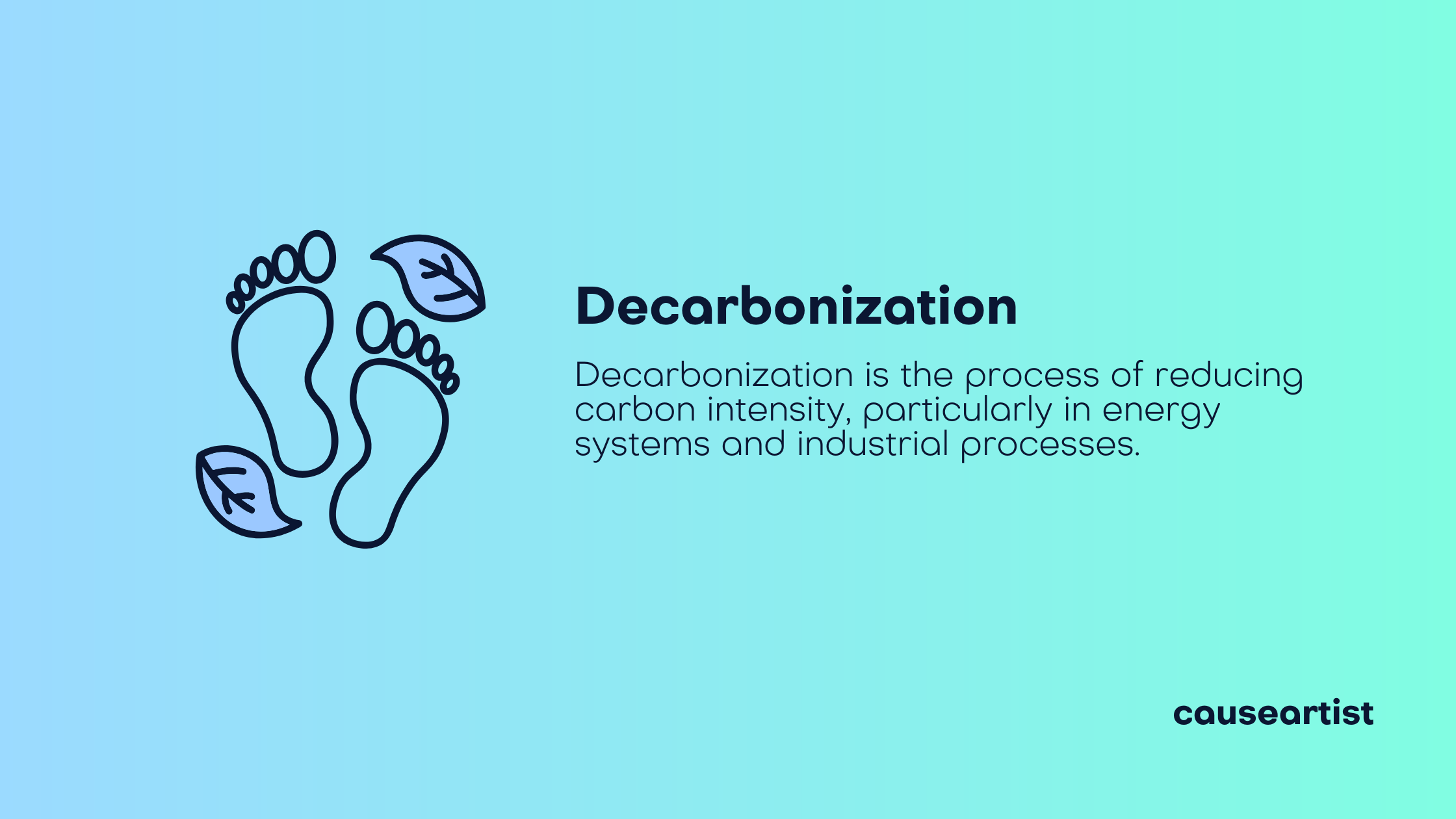Decarbonization is the process of reducing carbon intensity, particularly in energy systems and industrial processes. This involves shifting away from fossil fuels (like coal, oil, and natural gas) and toward clean, renewable sources of energy like wind, solar, and green hydrogen.
Why Decarbonization is Crucial
🧊 Climate Stability: Reducing CO₂ slows global warming, limiting the frequency of extreme weather events.
🏥 Public Health: Cleaner air reduces pollution-related illnesses and deaths.
📉 Economic Risk Mitigation: As governments introduce carbon taxes and regulations, companies that don't decarbonize face growing financial risks.
🌱 Environmental Justice: Communities most affected by pollution often overlap with those least responsible for emissions. Decarbonization supports a more equitable planet.

Major Sources of Carbon Emissions
Understanding where emissions come from helps us know where to focus our efforts.
- Energy Production (35%)
Burning fossil fuels for electricity and heat.
➤ Source: IEA Global Energy Review - Transportation (24%)
Cars, trucks, airplanes, and ships—all heavily reliant on oil.
➤ Source: EPA Emissions by Sector - Industry (21%)
Cement, steel, and chemical manufacturing contribute significantly.
➤ Source: WRI GHG Emissions Data - Agriculture & Land Use (18%)
Emissions from livestock, fertilizer, and deforestation.
➤ Source: FAO: Food and Agriculture Emissions
How Decarbonization Works: Key Strategies
⚡ 1. Clean Energy Transition
- Solar, wind, geothermal, and hydro power are replacing fossil fuels.
- Emerging technologies like green hydrogen provide long-term energy storage and industrial fuel alternatives.
🚗 2. Electrification
- Replacing combustion engines with electric motors (EVs).
- Electrifying building systems: heating, cooling, and cooking.
🧪 3. Carbon Capture & Storage (CCS)
- Captures CO₂ emissions at the source and stores them underground.
- Emerging companies like Carbon Clean and Climeworks are innovating in this space.
🧱 4. Low-Carbon Materials
- Switching to green steel, low-carbon concrete, and bioplastics.
- Startups are creating carbon-negative building materials and packaging.
🌳 5. Nature-Based Solutions
- Forest restoration, regenerative agriculture, and blue carbon ecosystems (like mangroves and kelp forests) naturally absorb CO₂.
- Tools like Pachama use AI to verify these projects.
Decarbonization and the Startup Ecosystem
Impact founders have a critical role to play. Whether you're building a B2B climate SaaS tool or a hardware-based clean tech solution, your venture is part of the solution.
💡 Notable Startups in Decarbonization:
- Twelve – Turns CO₂ into industrial chemicals and jet fuel.
- CarbonCure – Embeds CO₂ into concrete to reduce emissions.
- Watershed – Carbon accounting software for enterprise decarbonization.
- Charm Industrial – Converts biomass into bio-oil and stores it underground.
📊 Tracking Progress: Net Zero and Beyond
The term “Net Zero” refers to balancing the amount of emitted greenhouse gases with the amount removed from the atmosphere.
Who’s making pledges?
- 🏢 Corporates: Microsoft, Google, and Amazon have all committed to carbon neutrality.
- 🏛️ Governments: Over 140 countries have Net Zero targets.
➤ Track them here: Net Zero Tracker
🚀 Final Thoughts
Decarbonization isn’t a single technology—it’s a global movement of innovation, policy, and commitment. For purpose-driven founders, climate investors, and change-makers, this is the decade to lead.
Every app built, policy lobbied, or material redesigned contributes to the collective mission of a decarbonized future.




